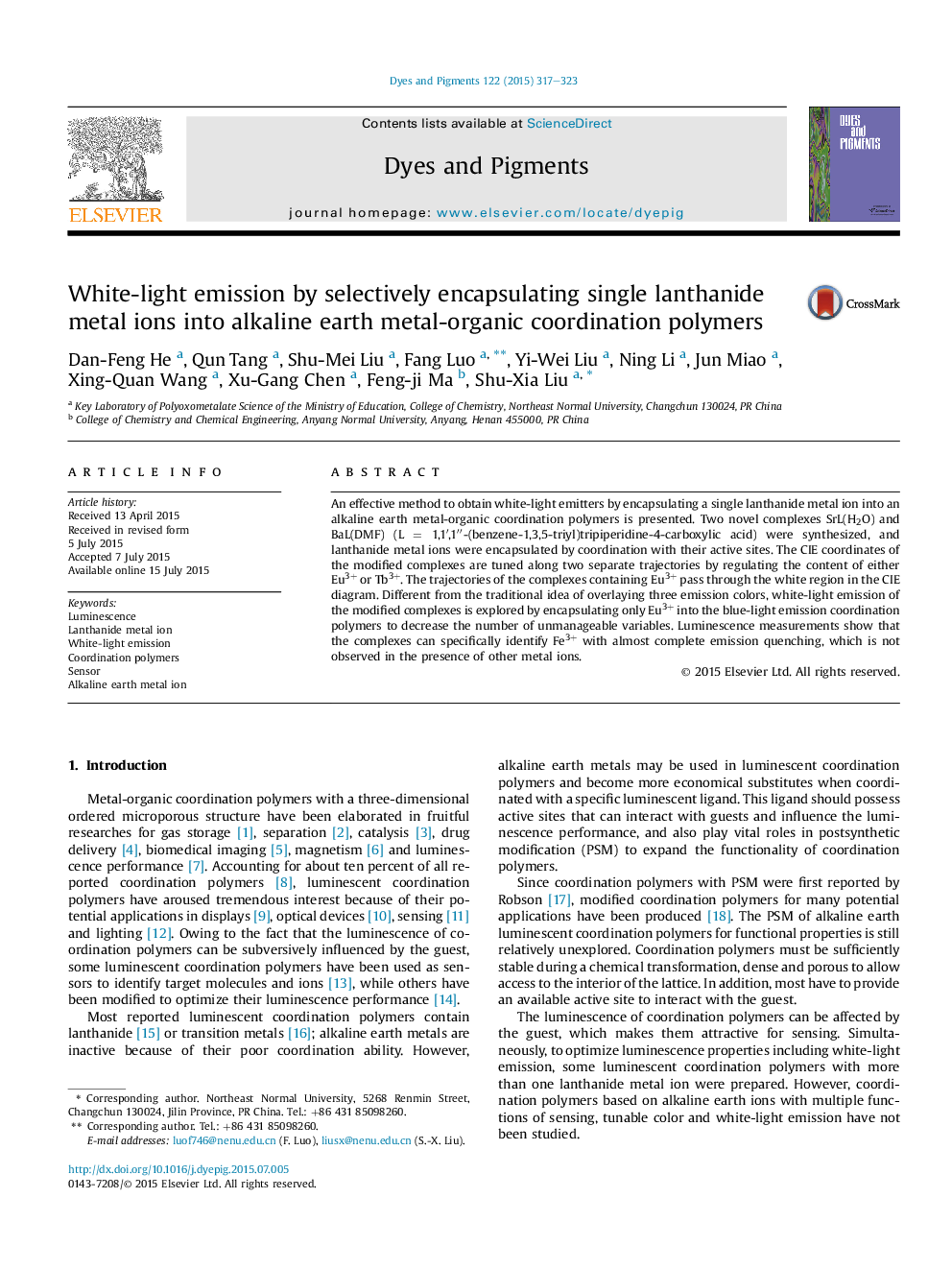| Article ID | Journal | Published Year | Pages | File Type |
|---|---|---|---|---|
| 175729 | Dyes and Pigments | 2015 | 7 Pages |
•Alkaline earth metal-organic coordination polymers with multiple active sites.•Eu3+ was fixed to generate white-light emission instead of “three primary colors”.•The amount of Ln3+ was obtained by two trajectories in the CIE colour space model.•The complexes were used to sense Fe(III) ions with an almost total quenching effect.
An effective method to obtain white-light emitters by encapsulating a single lanthanide metal ion into an alkaline earth metal-organic coordination polymers is presented. Two novel complexes SrL(H2O) and BaL(DMF) (L = 1,1′,1′′-(benzene-1,3,5-triyl)tripiperidine-4-carboxylic acid) were synthesized, and lanthanide metal ions were encapsulated by coordination with their active sites. The CIE coordinates of the modified complexes are tuned along two separate trajectories by regulating the content of either Eu3+ or Tb3+. The trajectories of the complexes containing Eu3+ pass through the white region in the CIE diagram. Different from the traditional idea of overlaying three emission colors, white-light emission of the modified complexes is explored by encapsulating only Eu3+ into the blue-light emission coordination polymers to decrease the number of unmanageable variables. Luminescence measurements show that the complexes can specifically identify Fe3+ with almost complete emission quenching, which is not observed in the presence of other metal ions.
Graphical abstractThe novel blue-light emitting alkaline earth metal-organic coordination polymer was converted to white-light emitter by selectively encapsulating single lanthanide metal ions.Figure optionsDownload full-size imageDownload as PowerPoint slide
